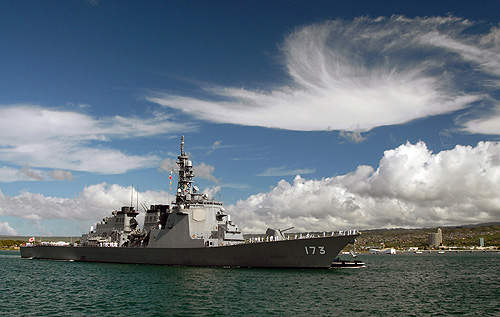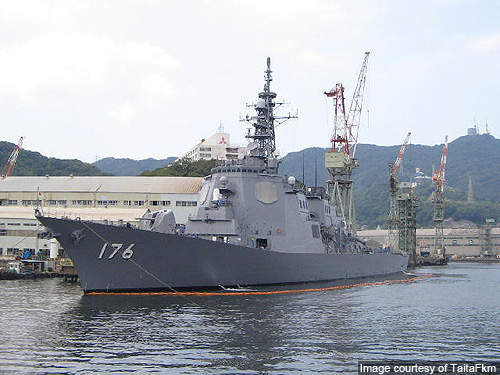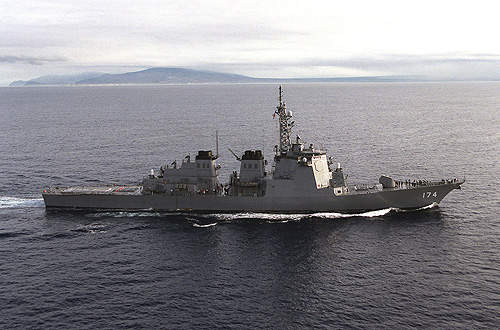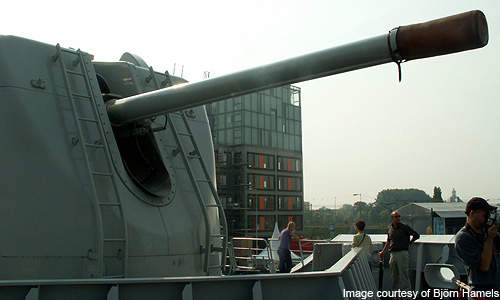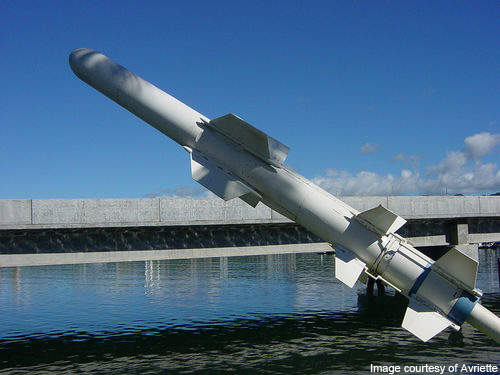The Kongō Class guided missile destroyers were built by Mitsubishi Heavy Industries and IHI Corporation for the Japan Maritime Self-Defence Force (JMSDF). The destroyer is a modified version of the US Navy’s Arleigh Burke Class destroyer. The Escort Flotillas of JMSDF operate four vessels. The Kongō Class is preceded by Hatakaze Class and succeeded by Atago Class destroyers.
The JMSDF built and commissioned four destroyers between 1990 and 1998. The keel for the lead vessel in class, JDS Kongō (DDG-173), was laid in May 1990. It was launched in September 1991 and commissioned in March 1993. JDS Kirishima (DDG-174) was laid down in April 1992, launched in August 1993 and commissioned in March 1995. JDS Myōkō (DDG-175) was laid down in April 1993, launched in October 1994 and commissioned in March 1996. The last vessel of class, JDS Chōkai (DDG-176), was laid down in May 1995. Chōkai was launched in August 1996 for the commissioning in March 1998.
Kongō Class destroyer design
Based on the Arleigh Burke Class destroyer, the design of Kongō Class features a vertical mast and a bridge with sleek sides. The superstructure prevailed by the SPY-1 phased arrays incorporates stealth features to reduce radar cross section. The vessel is larger than traditional destroyers, featuring a longer helicopter deck aft than the Arleigh Burke Class destroyer. The deeper draught of the destroyer limits its capabilities to conduct operations in littoral environments.
The Kongō Class has a length of 161m, beam of 21m and draft of 6.2m. The full load displacement of the ship is 9,500t. The destroyer can accommodate a crew of 300.
Command and control
The Kongō Class destroyers were the first vessels to be equipped with the Aegis combat system (ACS) after the US Navy warships.
The system integrates an advanced command and control system, and a weapons control system (WCS). The high-performance phased array radar system combined with powerful computers can search, detect and track over 200 targets simultaneously.
In July 2005, Lockheed Martin received a $124m contract under a foreign military sales (FMS) programme to supply the Aegis ballistic missile defence (BMD) system for four Kongō Class destroyers. Three destroyers were successfully modified with the Aegis BMD system. The system integration is expected to be complete by the end of 2010.
Kongō Class missiles
The destroyer is armed with the RIM-66 SM-2MR block II surface-to-air missiles and the RGM-84 Harpoon anti-ship missiles. The mk41 strike length vertical-launching system (VLS) can carry a total of 90 SM-2MR missiles, of which, 21 missiles are housed in the bow cells and 61 missiles in the aft cells of the VLS.
Guns
The main gun fitted is a 127mm / 54-calibre Oto-Breda compact gun. The gun can fire 40 rounds a minute within a range of 30,000m. There are two 20mm Phalanx close-in weapon systems (CIWS) mounted on the vessel.
Torpedoes and ASW rockets
Two type 68 triple torpedo tubes are mounted on the destroyers for ASW roles. These tubes can launch six mk46 or Type 73 torpedoes. The ship is also equipped with RUM-139 vertically launched anti-submarine rockets. The RUM-139 rocket is powered by two-stage solid rocket fuel engines.
Helicopter system
Kongō Class destroyers have a large aft flight deck to accommodate two ASW or patrol helicopters, but no helicopter hangar and support equipment is provided on these ships.
Radars and sensors
The sensor suite includes an SPY-1D air search radar, an OPS-28 surface search radar and a missile director radar. The sonar is an OQS-102 bow-mounted low-frequency sonar. There is a NOLQ-2 intercept or jammer fitted on the destroyer.
Propulsion
Kongō Class destroyers are equipped with a combined gas and gas (COGAG) propulsion system. Four Ishikawajima Harima / General Electric LM2500 gas turbines driving two shafts develop a power output of 75MW. The propulsion system provides a maximum speed of 30kt.

